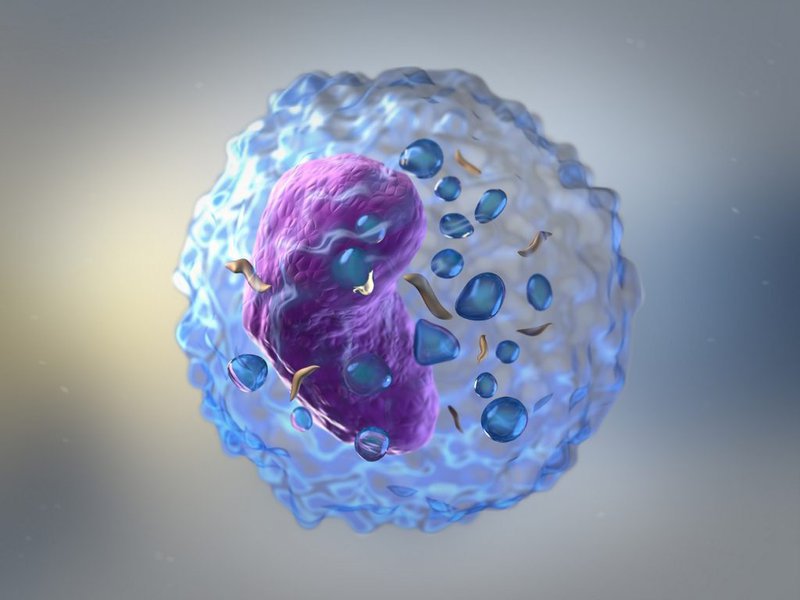Immunological characteristics of newborns
This is an automatically translated article.
The article was written by MSc Ma Van Tham - Internal Medicine Doctor, Department of Pediatrics - Neonatology - Vinmec Phu Quoc International General Hospital.
Our immune system is a chain of cells, tissues, and organs that protect us from invading pathogens, keep us healthy and resistant to many repeated infections. . When babies are babies, they get immune cells from their mother through the placenta and breast milk (if they're breastfeeding). Over time, the baby's systems become mature and able to fight off infections. We will learn about the immune characteristics of babies in the article below.
1. Immunoglobulins
Immunoglobulins (IgG) present in the fetus are mostly of maternal origin, and transplacental migration of IgGs occurs from the 8th week but mainly during the last 3 months of gestation. In term infants, IgG levels are equal to or higher than maternal levels. The specificity of umbilical-vascular IgGs depends on prior maternal antigen exposure and immune response.
In premature infants, IgG levels are directly related to gestational age. Studies show that the ratio of specific IgG antibodies to group B Streptococcus between the blood of the baby (umbilical cord) and the mother is 1.0, respectively; 0.5 and 0.3 in term infants; 32 weeks and 28 weeks. Furthermore, maternal IgG levels decreased immediately after birth. Children weighing < 1500g begin to have hypogammaglobulinemia when the average IgG level is 200-300 mg/dL in the first week. Other immunoglobulins do not cross the placenta and have low concentrations: IgM and IgA concentrations in 1-year-old children are only 60% and 20%, respectively, compared with adults.
In premature infants, IgG levels are directly related to gestational age. Studies show that the ratio of specific IgG antibodies to group B Streptococcus between the blood of the baby (umbilical cord) and the mother is 1.0, respectively; 0.5 and 0.3 in term infants; 32 weeks and 28 weeks. Furthermore, maternal IgG levels decreased immediately after birth. Children weighing < 1500g begin to have hypogammaglobulinemia when the average IgG level is 200-300 mg/dL in the first week. Other immunoglobulins do not cross the placenta and have low concentrations: IgM and IgA concentrations in 1-year-old children are only 60% and 20%, respectively, compared with adults.
2. Complement
The complement system consists of a chain of proteins that interact with each other to set off chain reactions with other proteins important in fighting bacterial cells (cytotoxicity and chemotaxis factors, opsonins). ). The fundamental phenomenon in the complement chain reaction is the conversion of a C3 molecule to an active C3b molecule. This phenomenon can be generated by classical route or by shortcut. The complement chain multiplies the immune response against infection: Just 1 IgG molecule can form 10,000 membrane attack complexes.
Fetal complement synthesis occurs from 6 weeks. Plasma concentrations of the complement system in neonates are lower than in adults. Concentrations and activity of complement in premature infants are lower than in term infants.
Fetal complement synthesis occurs from 6 weeks. Plasma concentrations of the complement system in neonates are lower than in adults. Concentrations and activity of complement in premature infants are lower than in term infants.
3. Neutrophils polymorphonuclear leukocytes

Trẻ sinh non dễ bị nhiễm khuẩn do thiếu hụt hệ thống thực bào.
The deficiency in both quantity and quality of the phagocytic system makes the neonate vulnerable to bacterial infections. The chemotaxis of neutrophils in both preterm and term infants is poor. Neonatal neutrophils lack the ability to adhere, aggregate, and transform, thereby slowing the response to infection. When fully opsonized, the phagocytosis and killing capacities of neutrophils are comparable in neonates and adults. The poor oxidizing capacity of neonatal neutrophils is also an increased risk of infection, especially in premature infants.
Neutropenia in premature infants is also a risk factor for increased infection. A decrease in quantity will lead to a decline in quality, which is caused by many undifferentiated cells circulating in the blood. The neutrophil reserve in neonates is only 20-30% of that in adults. High mortality is also associated with bacterial neutropenia and bone marrow failure.
Neutropenia in premature infants is also a risk factor for increased infection. A decrease in quantity will lead to a decline in quality, which is caused by many undifferentiated cells circulating in the blood. The neutrophil reserve in neonates is only 20-30% of that in adults. High mortality is also associated with bacterial neutropenia and bone marrow failure.
4. Monocyte and Macrophage System
The monocyte and macrophage system includes circulating blood monocytes and tissue macrophages; especially the liver, spleen and lungs. The activities of macrophages include antigen presentation, phagocytosis, and immune regulation. The neonatal monocyte count is normal, but the function of macrophages in the endothelial system is poor, especially in premature infants. Monocyte chemotaxis is poor in both preterm and term infants, thereby reducing the inflammatory response in tissues.
5. Natural killer cells (NK)

Tế bào NK là thành phần quan trọng của hệ miễn dịch của trẻ.
Natural killer cells, also known as NK cells, are a type of white blood cell in the natural immune system, capable of rapidly reacting to virus-infected and differentiated cells. cells capable of forming cancer. Their function is to recognize and destroy virus-infected cells including newly born cells.
The adaptive immune system is composed of B cells and T cells. B cells play a major role in the humoral immune response, while T cells are mainly involved in immune mediated responses. cell.
The innate immune system is composed of cells and proteins that play an important role in the initiation and subsequent activation of the adaptive immune system. The major components of the innate immune system are the physical epithelial barrier, phagocytosis, dendritic cells, and natural killer cells.
NK cells are important components of the innate immune system, they are large, granular bone marrow-derived lymphocytes. NK cells make up the third largest number of lymphocytes after B and T cells. They are also found in the peritoneal cavity, spleen, liver, lung, lymph nodes, thymus, and uterus during pregnancy. pregnant. However, the cytotoxicity of NK cells in neonates is much lower than in adults.
The adaptive immune system is composed of B cells and T cells. B cells play a major role in the humoral immune response, while T cells are mainly involved in immune mediated responses. cell.
The innate immune system is composed of cells and proteins that play an important role in the initiation and subsequent activation of the adaptive immune system. The major components of the innate immune system are the physical epithelial barrier, phagocytosis, dendritic cells, and natural killer cells.
NK cells are important components of the innate immune system, they are large, granular bone marrow-derived lymphocytes. NK cells make up the third largest number of lymphocytes after B and T cells. They are also found in the peritoneal cavity, spleen, liver, lung, lymph nodes, thymus, and uterus during pregnancy. pregnant. However, the cytotoxicity of NK cells in neonates is much lower than in adults.
6. Cytokines and chemical intermediates
The patient's response to infection and clinical presentation are related to a balance between pro-inflammatory and anti-inflammatory cytokines. Chemical mediators that have been studied in neonates include tissue necrosis factor (TNF), interleukin 1 (IL-1), IL-4, IL-6, IL-8, IL-10, IL- 12, platelet activating factor and leukotrienes. The ability to produce cytokines in the neonate is still weak due to the immaturity of macrophages.
For the child's immune system as well as other organ systems to develop comprehensively, parents should supplement their children with essential micro-minerals such as zinc, lysine, chromium, selenium, vitamin B1, ... meet nutritional needs. The addition of these essential vitamins also supports digestion, enhances nutrient absorption, improves anorexia, and helps children eat well. Parents can simultaneously apply dietary supplements and functional foods derived from nature for easy absorption. Do not forget to regularly visit the website vimec.com to update useful baby care information.
This article is written for readers from Sài Gòn, Hà Nội, Hồ Chí Minh, Phú Quốc, Nha Trang, Hạ Long, Hải Phòng, Đà Nẵng.





